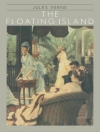‘The Complete Works of Nathaniel Hawthorne’ is an indispensable compendium that showcases the literary genius of one of America’s most celebrated authors. Spanning diverse genres, including novels, short stories, and essays, this collection encapsulates Hawthorne’s masterful command of language and his profound explorations of complex themes such as morality, sin, and the human condition. His distinctive use of symbolism and allegory crafts rich narratives that reflect the social context of 19th-century America, intertwining psychological depth with the supernatural. Nathaniel Hawthorne, born in 1804 in Salem, Massachusetts, was profoundly shaped by his Puritan heritage and his ancestral connections to the Salem witch trials. These influences permeate his works, leading him to probe the darker aspects of human nature and societal conventions. His experiences, including his tenure as a customs officer and his friendships with literary contemporaries such as Herman Melville, contributed to his unique stylistic evolution, culminating in narratives that challenge readers to contemplate the interplay between fate and free will. For those seeking to delve into America’s literary heritage, ‘The Complete Works of Nathaniel Hawthorne’ is essential reading. It offers a profound insight into the mind of a writer who deftly navigated the complexities of his time, making it an enlightening addition to any literary collection.
เกี่ยวกับผู้แต่ง
Nathaniel Hawthorne (1804–1864) was a profound American novelist and short story writer, known for his dark romanticism and exploration of moral and psychological complexities. Born in Salem, Massachusetts, Hawthorne was deeply influenced by the Puritan legacy of his ancestors, which is clearly visible in his works. His probe into the darker aspects of human nature and the consequences of sin, guilt, and redemption resonate throughout his writing. Hawthorne’s rich literary style combines allegory and symbolism, something distinctly found in his well-acclaimed novel ‘The Scarlet Letter’ (1850). In this iconic work, Hawthorne explores themes of legalism, sin, and guilt in Puritan society, which have stamped it as a classic of American literature. He further illustrated his command over historical romance in books like ‘The House of the Seven Gables’ (1851), drawing upon gothic elements to construct narratives that delve into themes of ancestral sin and retribution. Hawthorne’s collection, ‘The Complete Works of Nathaniel Hawthorne’, encompasses not only his famous novels but also his lesser-known short stories and essays, which together cement his reputation as a master of the short story form and as a key figure in the development of American literature in the nineteenth century. Reclusive by nature, Hawthorne’s work was nevertheless central to the New England transcendentalist movement, corroborating with peers such as Ralph Waldo Emerson and Henry David Thoreau. Beyond his narrative accomplishments, Hawthorne’s literary legacy has influenced a myriad of writers, playing a significant role in the history of American literature.












